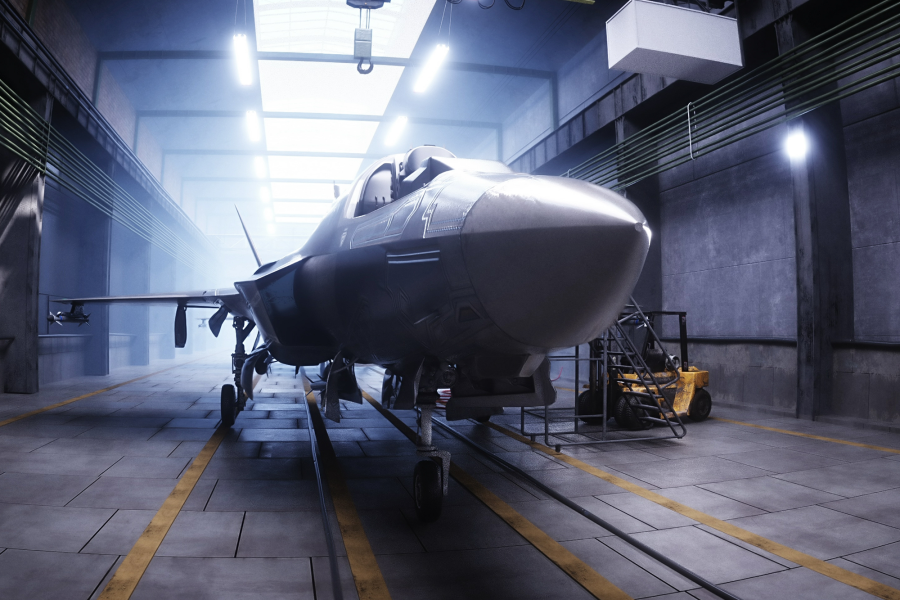The Air Force may be operating the oldest, smallest air fleet in its history, but it hasn’t stopped keeping those planes modernized and combat-effective against the latest weapons and threats.
Josh Erlien, director of life cycle integration for Tactical Aircraft Electronic Warfare at BAE Systems, says his mission is to provide enhanced product support that goes beyond spares and repairs to ensure USAF maintains technological superiority in its battlespace.
“Life cycle integration is a concept that we’re applying at BAE Systems to embed people like me into product lines and programs in all phases,” he said. From the design phase to production and through a system’s entire life cycle, these embedded experts serve as advocates and thought leaders to ensure warfighters have ready and relevant electronic warfare capabilities when they need them most.
“We need to be focused on ease of upgrade, ease of maintainability, to get them back into the fight,” he said.
Too often, logistics and product-support issues don’t get attention until it’s too late: An aircraft is on the ground and no spare parts are on the shelf. “Those tend to be symptoms, and not the root cause,” Erlien said. Life cycle integration is about left-shifting sustainment thought into the design, and constructing support packages that can withstand the contested environment. Support needs to be “a forethought, not an afterthought.”
Life cycle integration focuses on examining the underlying drivers such as material strategy and contract structure that can potentially impact readiness. “We look at the end-to-end supply chain velocity,” he said. They also look at the warfighting environment, he added, because “How our systems are going to be used should strongly influence our design.”
Erlien brings a warfighter’s perspective to the job. He served as a Deceptive Electronics Countermeasures (DECM) technician in the Marine Corps, and before joining BAE Systems in 2022, he was chief of product support for the Spectrum Warfare Department at the Naval Surface Warfare Center in Crane, Indiana. “I understand the constraints that our maintainers are faced with,” he said.
To avoid supportability challenges, Erlien said, BAE Systems focuses on the foundational elements of product support, such as good technical documentation, a focus on readiness, and understanding customer constraints, while striving to be innovative.
“Life cycle cost is everything,” he acknowledges. “Our customers demand performance,” he adds. “But they also demand affordability.”
To thread that needle, BAE Systems looks at ways to minimize development time by employing a leverage strategy. Leveraging existing architecture to speed up the delivery of new EW capability and drive down cost. He said: “We’re leveraging modularity to update systems, leveraging investments in infrastructure, adapting building blocks to apply to another customer’s mission.”
A product designed for one mission system could be adapted to fit another customer’s application while also trying to leverage economies of scale in material procurement and Public-Private Partnerships that enable the best mix of public and private resources.
Designing for sustainability, supportability, and upgradeability is also key. “Our customers are demanding resilience be built into our weapons systems,” Erlien said. BAE Systems aims to answer that call.
“Resilience is the ability to reconfigure, to repair at the point of need, to keep our systems ready to go without needing to be evacuated back to a depot.” To respond to new threats, he said, systems must be upgraded as needed to adapt to a changing environment.
“It’s not just having the product on the shelf available for use,” Erlien said. It’s about being ready with a solution as soon as one is needed. “As we are designing products and setting up sustainment strategies, we have upgrade in mind,” he said. This is about “making sure that our customers can do what they need to do with the system to make it the most useful in the battlefield.”
Increasingly, that means updates implemented in software rather than hardware, enabling greater adaptability and rapid updates as threats change. “The ability to upgrade software in the field is critical,” Erlien said. “Software controls the functionality of our systems, and so making that easier for our customer to do in the field, at the point of need, is vital.”
The Air Force keeps its systems in use for decades, but the systems it fights with today are typically vastly improved versions of the ones they began with years ago—and building blocks to the solutions they’ll fight with tomorrow. Integrating enhancements with life cycle support solutions is one way BAE Systems helps the Air Force stay ahead of mission requirements.
